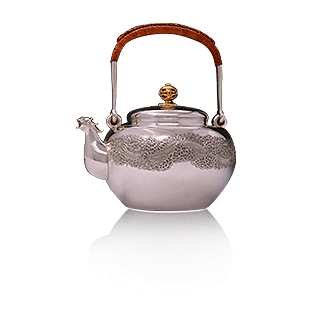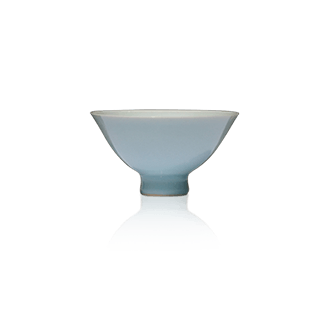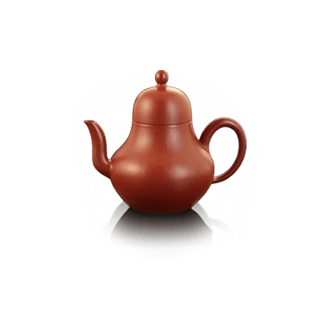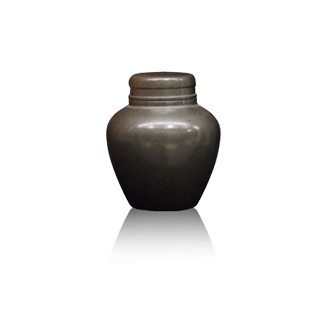
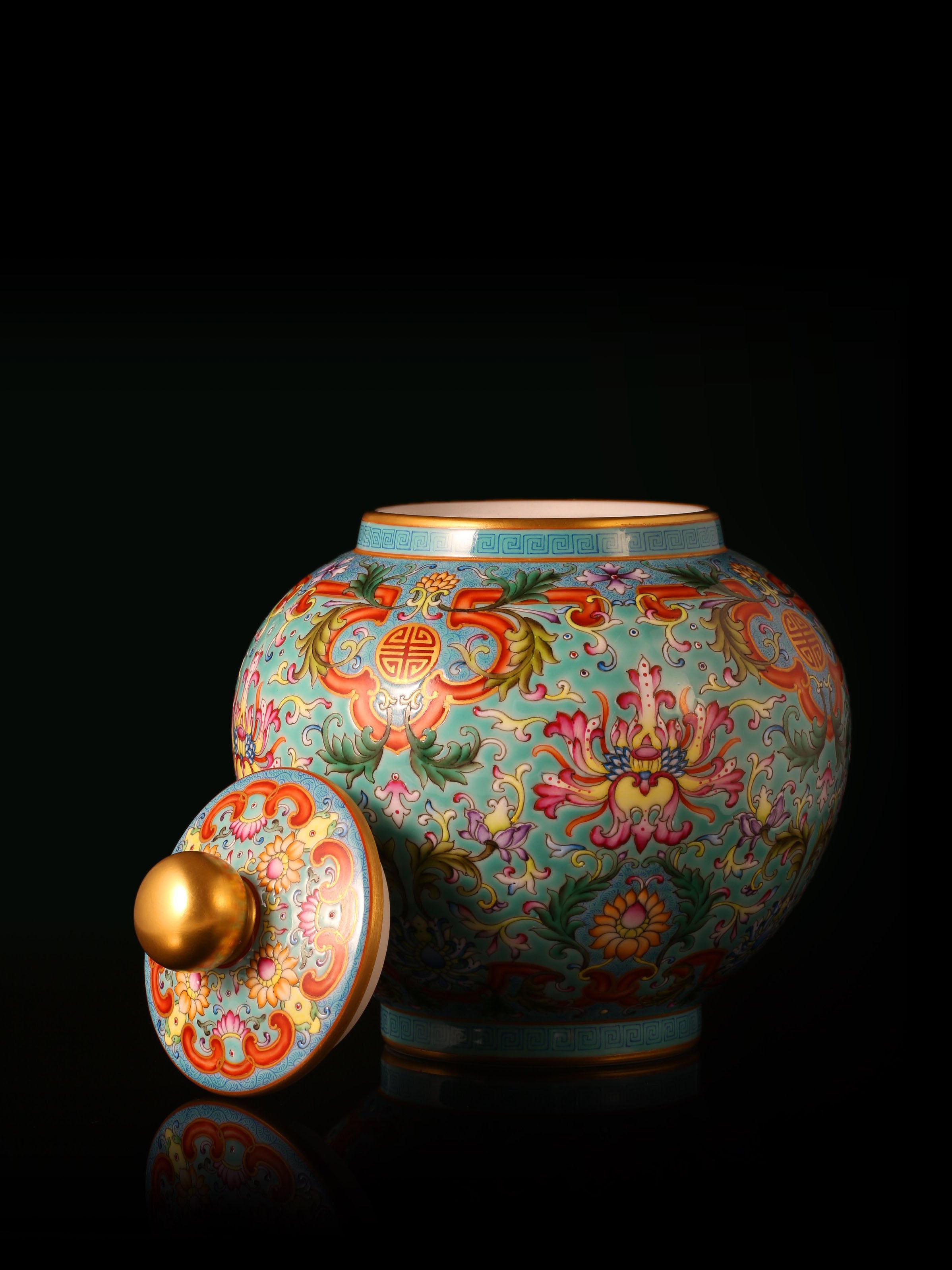
Enamel-painted lotus flower pattern, iron-red ruyi frame, tea canister




Enamel-painted lotus flower pattern, iron-red ruyi frame, tea canister
Enamel-painted lotus flower pattern, iron-red ruyi frame, tea canister
Enamel-painted lotus flower pattern, iron-red ruyi frame, tea canister
Vessel Type: Tea Holder
Artist: dayatang
Material: Porcelain )
Specifications: Diameter: 8cm; Overall height: 16.5cm
Vessel Type: Tea Holder
Artist: dayatang
Material: Porcelain )
Specifications: Diameter: 8cm; Overall height: 16.5cm

Enamel-painted lotus flower pattern, iron-red ruyi frame, tea canister
This enamel-painted tea caddy with lotus blossom and iron-red ruyi design was jointly created by Xu Zhijun, an inheritor of the Qing Dynasty imperial kiln famille rose porcelain painting technique from Jingdezhen, and Zhang Jian, a master of overglaze enamel and gold-leaf technique, along with several other masters. It employs multiple techniques including enamel painting, iron-red enamel, and gold-leaf technique, and is fired four times in the kiln. The patterns include intertwined branches and lotus blossom knots, each with a meaningful and auspicious meaning. The exquisite decoration and elegant colors achieve a perfect and refined aesthetic.
Treasure flower:
The term "Baoxiang" originates from Buddhism. It is a respectful term used by Buddhist believers to refer to the image of the Buddha, and it represents an ideal flower shape that is pure, dignified, and beautiful.
The term "Baoxianghua" does not refer to a single flower shape. It is a pattern that has undergone artistic refinement, incorporating and refining elements from various flowers such as lotus, peony, and pomegranate.
The lotus flower pattern originated and flourished in the Tang Dynasty, inheriting the Tang Dynasty's aesthetic tendency of valuing fullness and the characteristics of national art and culture. By the Song Dynasty, the lotus flower pattern had changed from its rich and luxurious style to become more regular and simple. The Song Dynasty also saw the emergence of the intertwined lotus flower pattern, which also had a more obvious sense of movement.
vine pattern:
The exterior is painted with enamel-painted intertwined branches, with clear veins and graceful, dynamic foliage. The continuous structure of the branches and leaves symbolizes "endless life".
Ruyi knot:
The love knot is an ancient knot. It symbolizes good fortune, auspiciousness, and warding off evil.













Frequently asked questions
Use the FAQ section to answer your customers' most frequent questions.
Order
Yes, we ship all over the world. Shipping costs will apply, and will be added at checkout. We run discounts and promotions all year, so stay tuned for exclusive deals.
It depends on where you are. Orders processed here will take 5-7 business days to arrive. Overseas deliveries can take anywhere from 7-16 days. Delivery details will be provided in your confirmation email.
You can contact us through our contact page! We will be happy to assist you.





